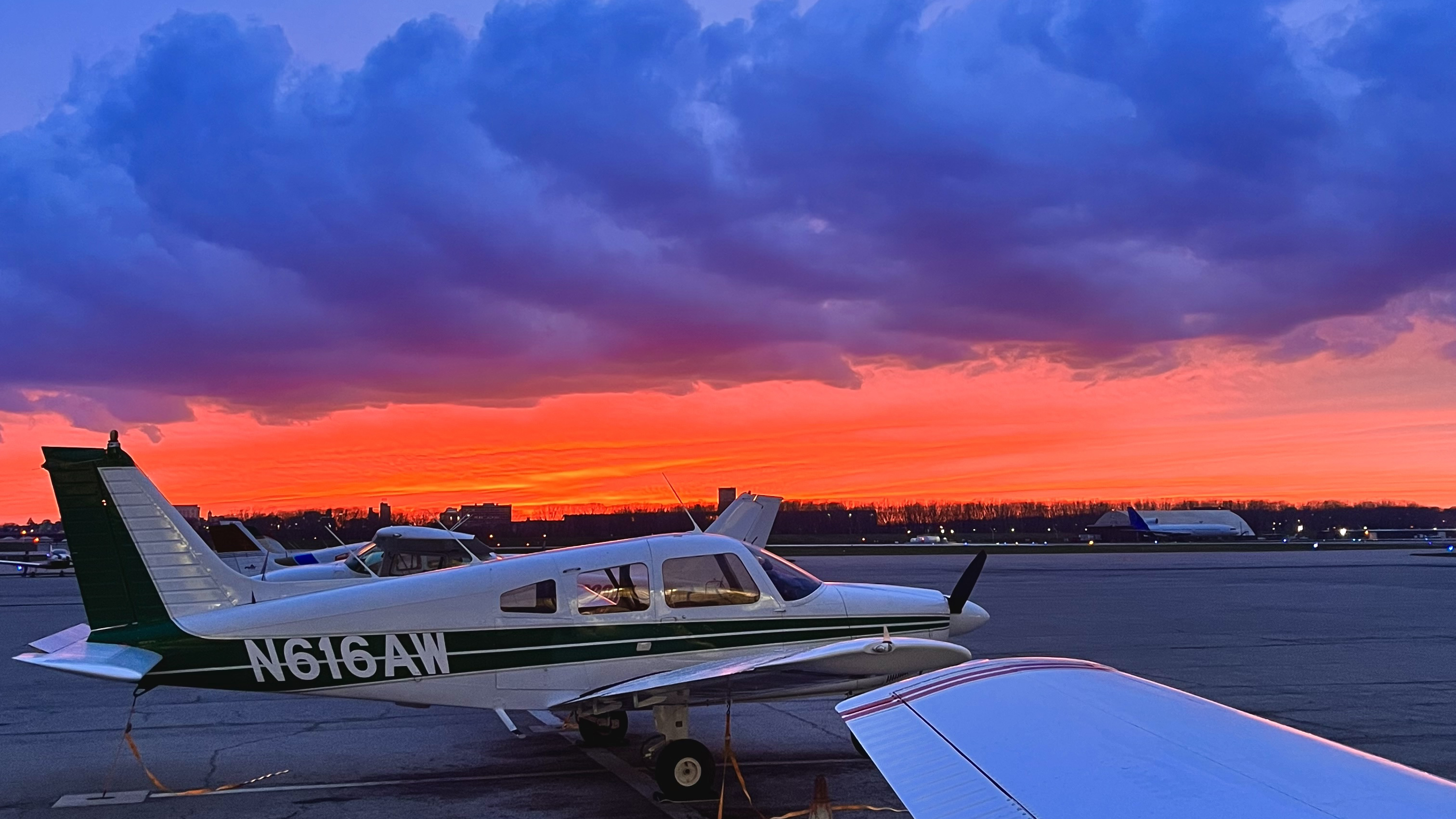'We knew so many of the names'
Missouri flight school kept teaching
When a ”gustnado” hit Kansas City, Missouri, a year ago, the local flight school, ATD Flight Systems, lost 11 of its 13 training aircraft.

Charles B. Wheeler Downtown Airport was in the crosshairs of a storm that struck the early morning hours of April 20, and the owners of the family-run flight school at the time were afraid that the loss would be compounded by the departure of their staff, which might spell the end of a business that has grown since 1996.
According to the National Oceanic and Atmospheric Administration’s National Weather Service glossary, a gustnado is “a small, whirlwind which forms as an eddy in thunderstorm outflows….Like dust devils, some stronger gustnadoes can cause damage.”
A severe weather warning was in effect, but unfortunately, ATD’s aircraft, which were usually hangared, were parked outside on a ramp operated by Signature Flight Support, because the hangar was prepared for a charity event that evening. The storm brought winds gusting up to 65 mph, according to a report compiled by NWS Lead Meteorologist Scott Blair, and tossed the parked aircraft, which were chocked but not tied down, like toys.
In the aftermath, the flight school used its remaining two aircraft and four it had received on leaseback to prioritize students who were close to a milestone and to make sure that instructors continued to work. Five students left the school, two of whom later returned.
ATD Flight Systems is owned by Bill Hays and family and has operated out of the airport since 1996. “There’s no way to sugarcoat it, it was bad,” Keara Neifach, director of operations, described the time directly after the event in a phone conversation with AOPA. “I think we didn’t sleep for two months.”
Since then, the flight school has made strides to replace the fleet. It currently owns 15 aircraft: two Cessna 172s, two Piper Aztecs (for multiengine training), seven Piper Warriors, and four Piper Archers. In addition, it operates two simulators.
To keep a maximum of aircraft available for training, the school has established a rotation system that sends one aircraft at a time to the avionics shop to upgrade the avionics in the new aircraft to the standard for which the school was known before the gustnado hit. The aircraft are outfitted with a full suite of Garmin avionics; two to comply with technically advanced aircraft standards. The school’s two Piper Archers are prewired to eventually receive the same treatment. It takes several months to upgrade the avionics in one aircraft. Work has been completed on two-thirds of the fleet. “It’s a slow moving process,” Neifach said.
Due to a steep price increase for pre-owned aircraft across the industry, the insurance payout didn’t cover the total it took to replace the hardware. As a matter of fact, the school’s insurance rates went up 30 percent, even though it wasn’t responsible for the damage.
ATD retained every flight instructor on the staff in part because it was able to maintain flight training with the leaseback aircraft, but also because funds from a GoFundMe that raised $30,059 were used to supplement the instructors’ salary so they could keep up with bills. Contributions came in mainly from the local community.
“People keep in touch, past instructors are now working for the airlines and we have a special place in their hearts. Looking through the GoFundMe list we were often crying because we knew so many of the names,” Neifach recalled. She also thinks that the facts that the flight school is like a very close-knit family and that employees simply trusted her business acumen contributed to the survival of ATD.
At this point, ATD employs 17 flight instructors and has about 60 student pilots. It’s in the market for another Piper Archer.



